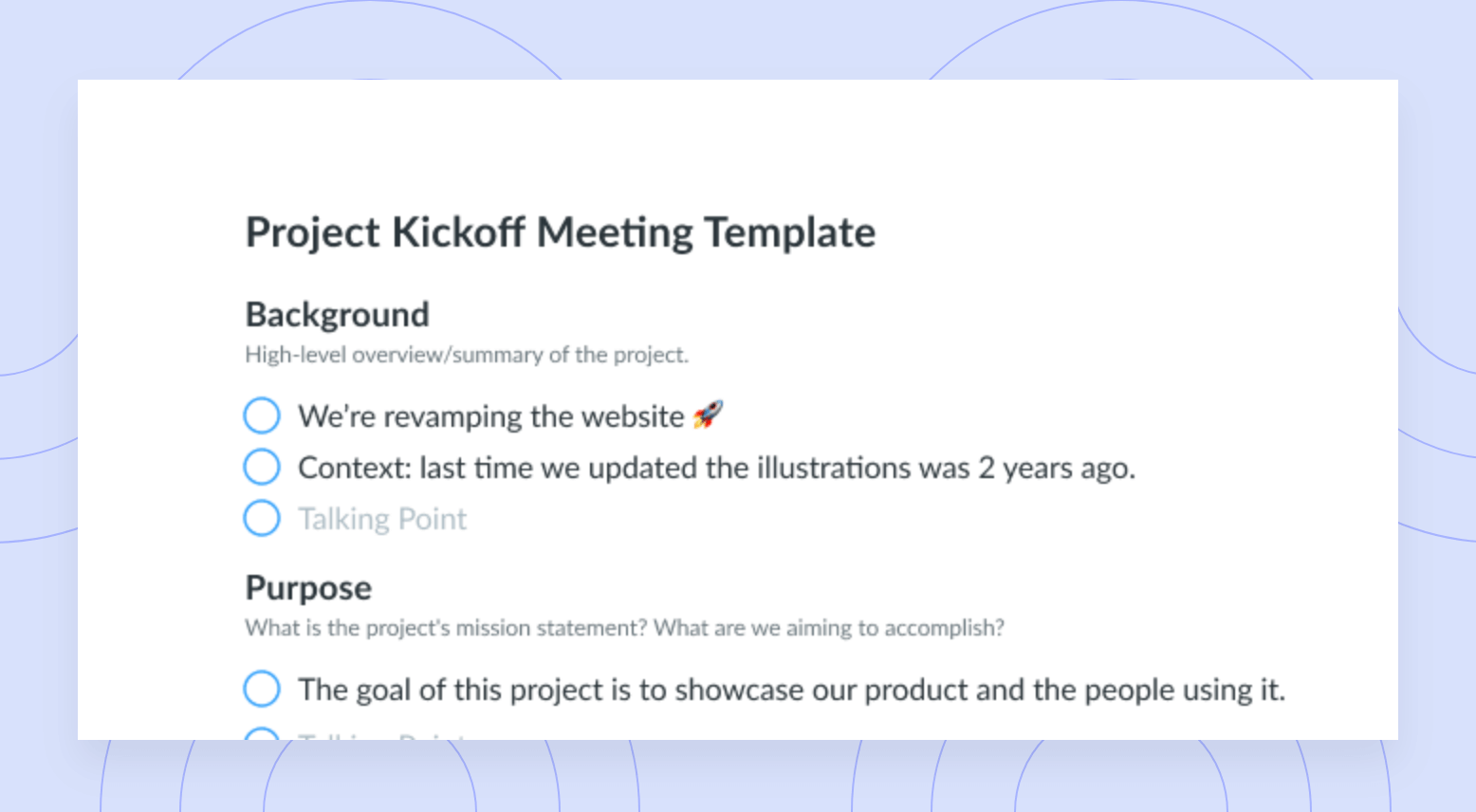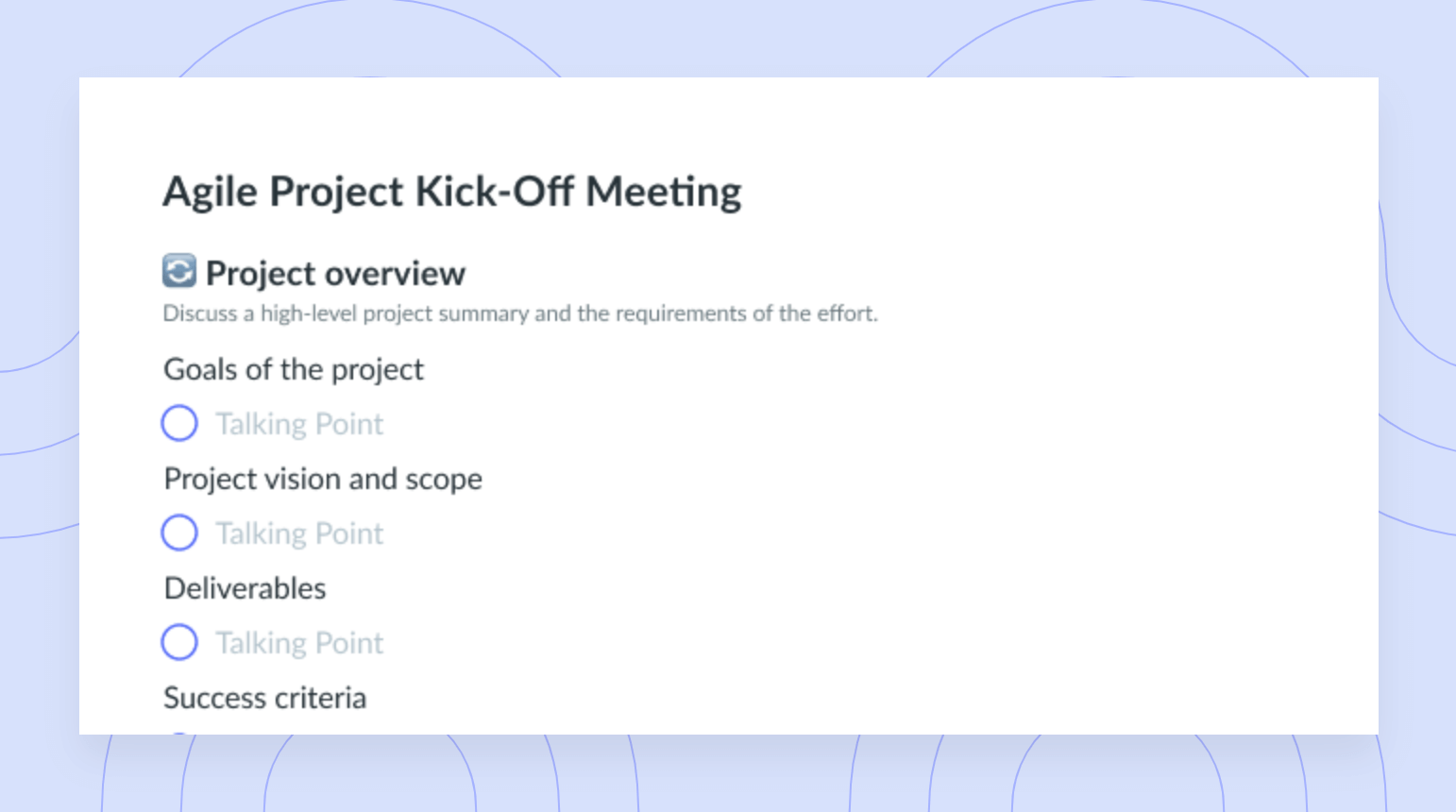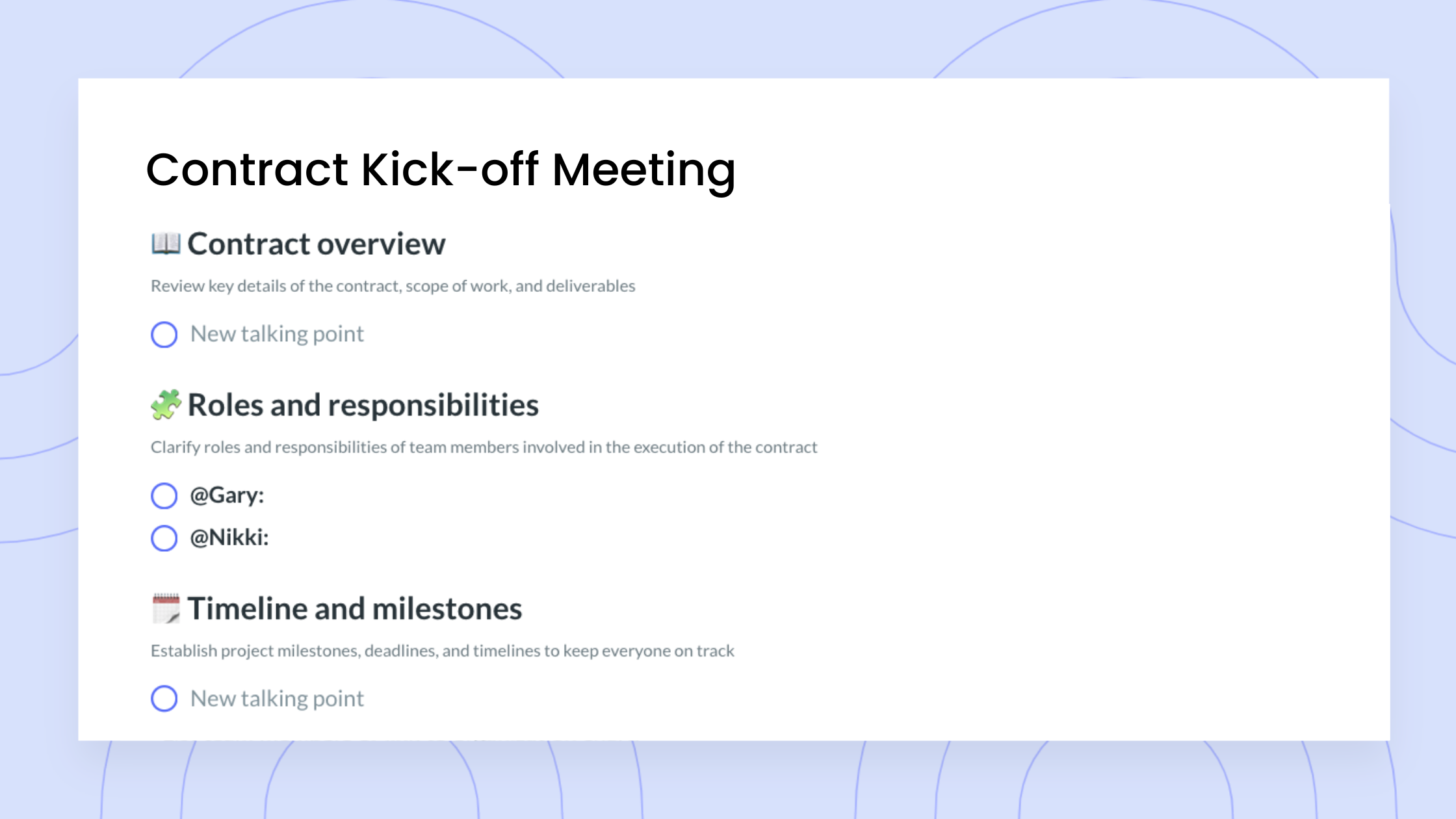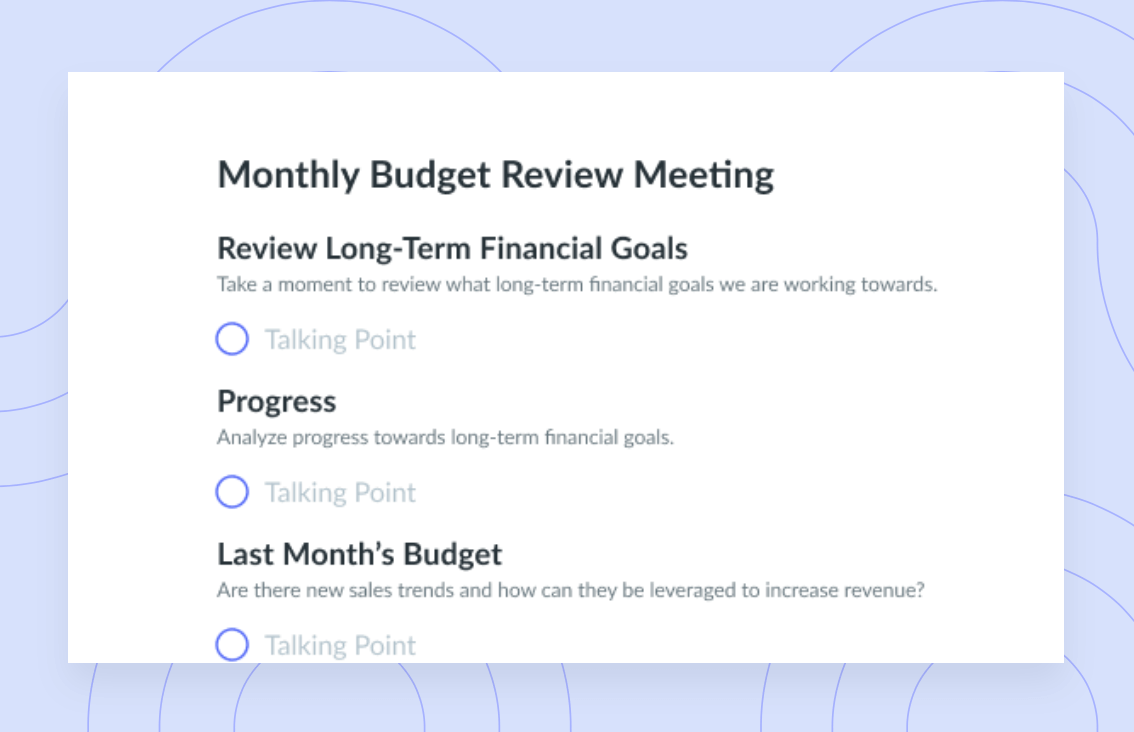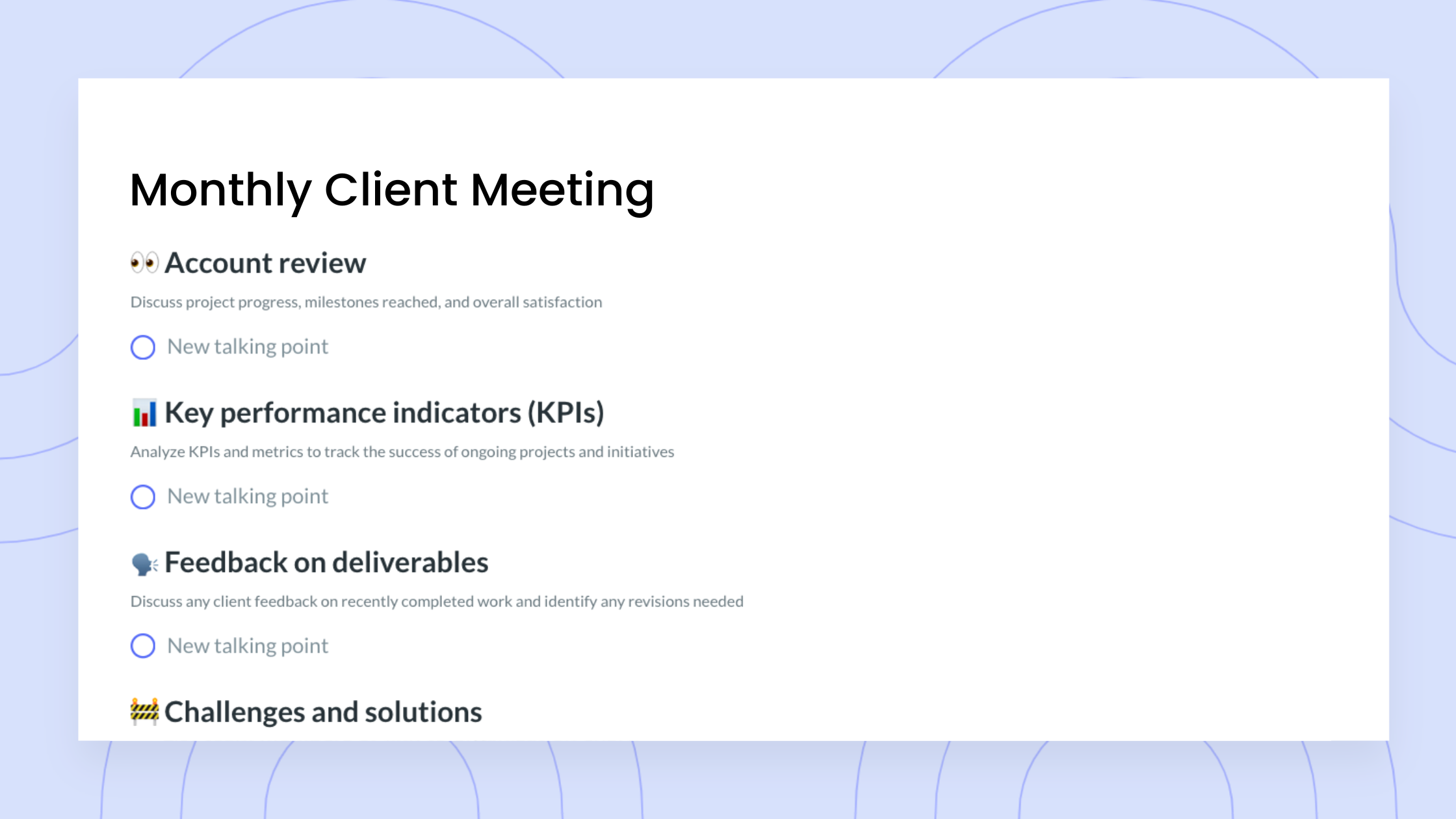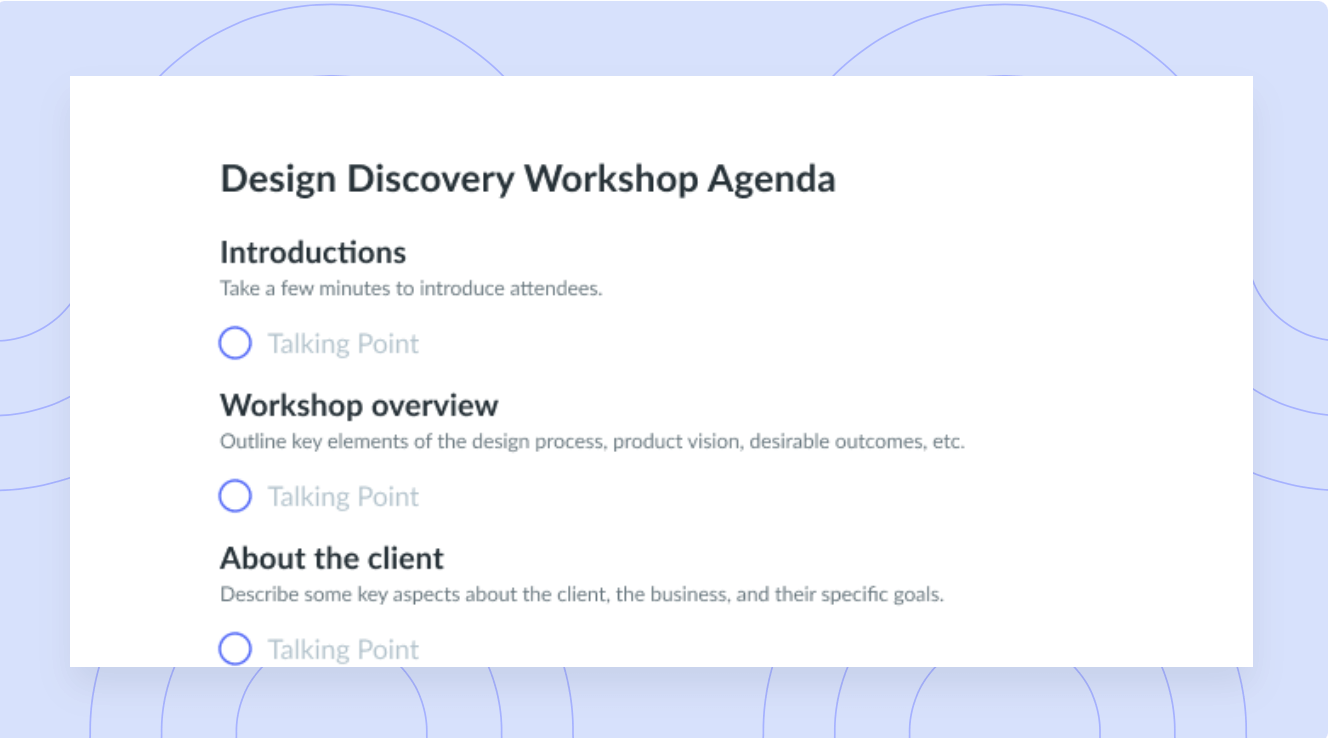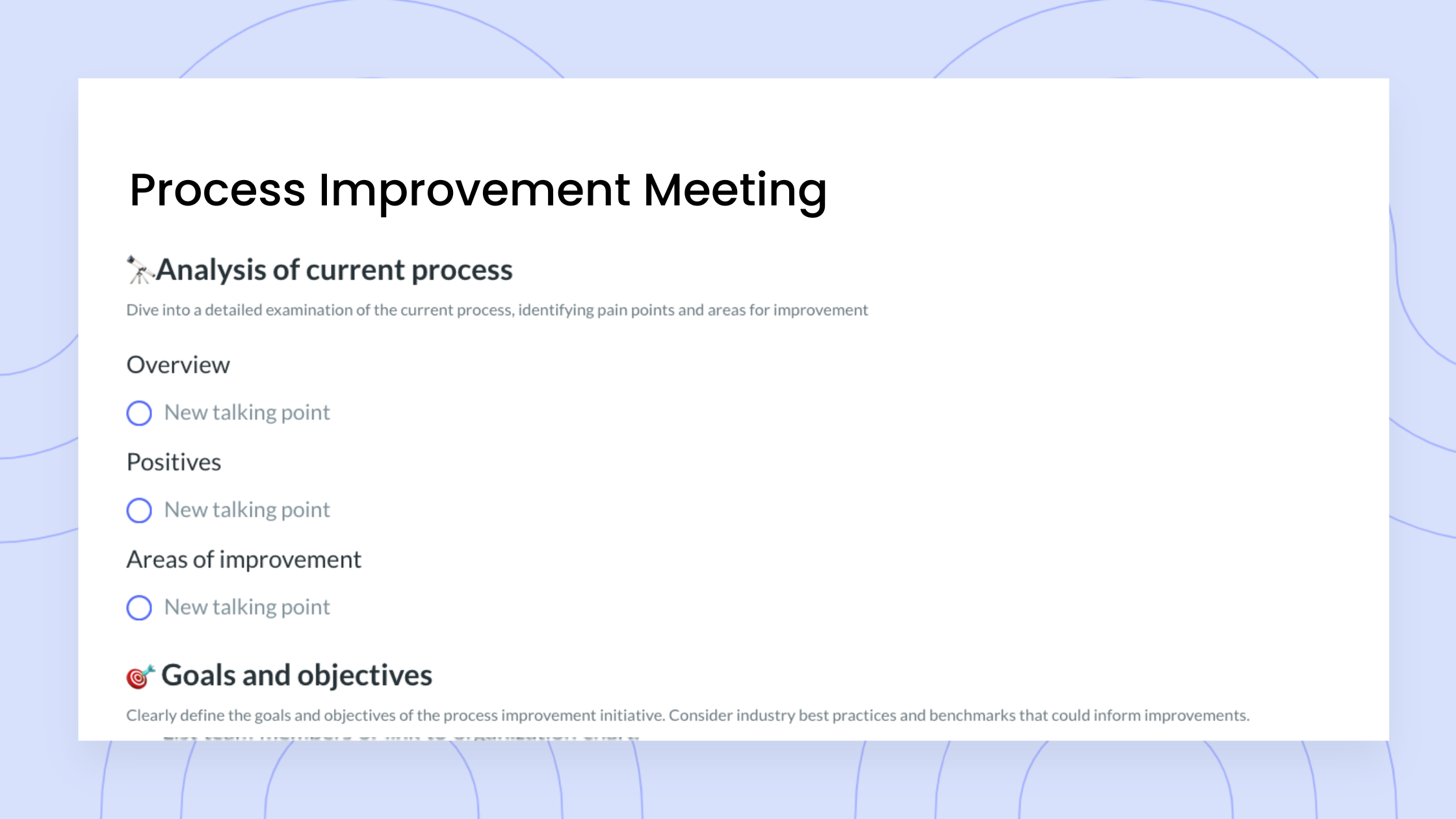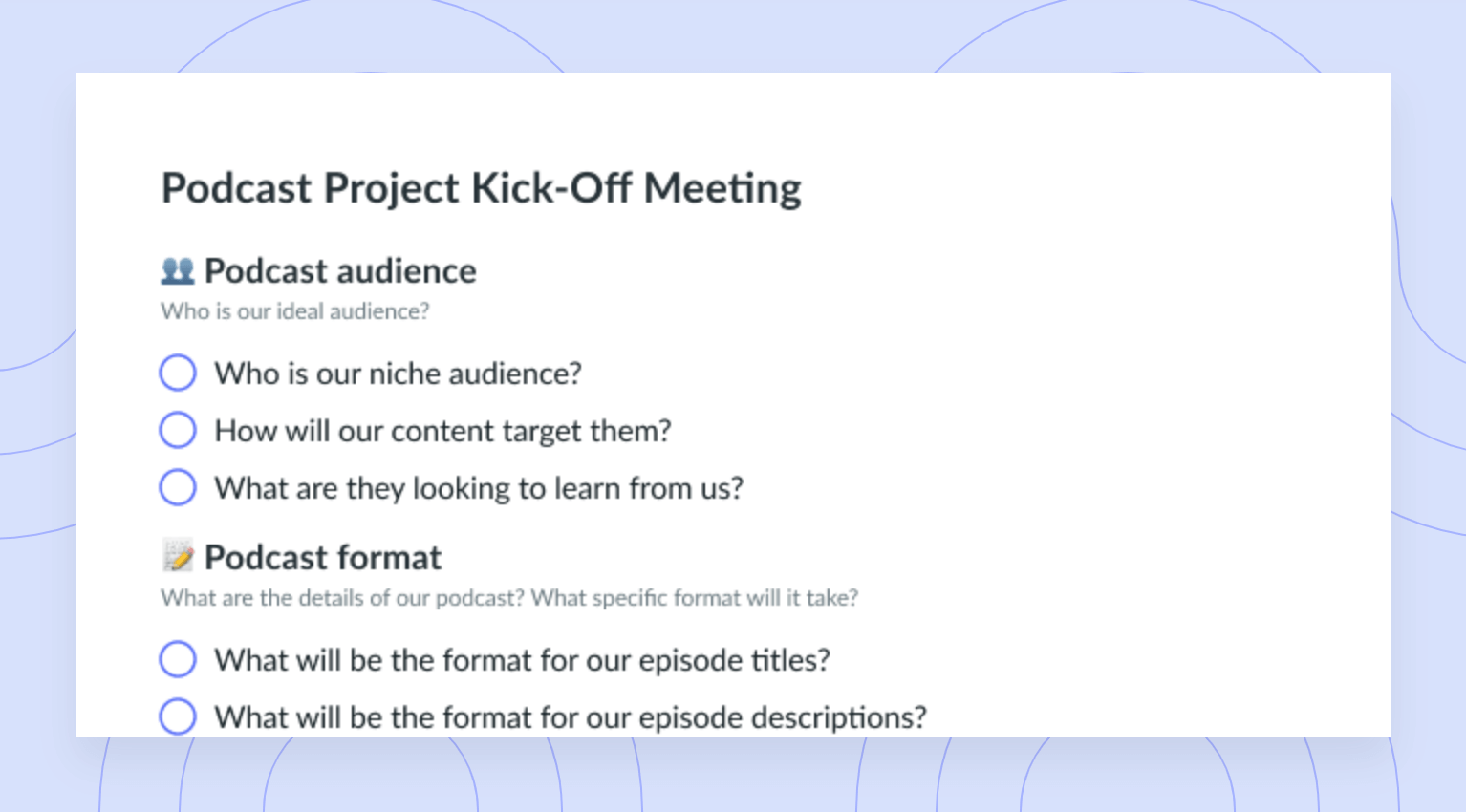How to Create a Successful Project Scope
Learn the benefits of project scope and 7 steps to create a successful project scope. Plus, how to avoid project creep and meet deliverables.
Creating a comprehensive project scope boasts a variety of benefits, including aligning your teammates, homing in on key deliverables and timelines, defining goals and objectives, and paving the way for a successful project. Without a project scope, you may run the risk of misalignment—especially if your teammates aren’t clear on deliverables and you’re missing key timelines or going over budget.
In this article, we’ll define what makes a solid project scope, outline the benefits of a project scope, and cover seven steps you can take to create a successful project scope.
What is project scope?
Project scope is a detailed outline or overview of all aspects of a project including, but not limited to, resources needed, timelines, deliverables, and project boundaries. A solid project scope will also outline processes, assumptions, constraints, and an in-depth project overview that informs key stakeholders of said components.
A project scope is the part of the project planning process that accounts for determining and documenting project goals and deliverables, tasks, costs, and deadlines. In short, a project scope is the description of all of the work that needs to be done, the resources that are needed to get the job done, and key markers or benchmarks that will be used to measure success and bring the project to fruition.

Track objectives as part of your meeting workflow
Stay on top of your team’s goals by clearly recording, defining, and tracking the progress of your OKRs in Fellow’s Objectives tool.
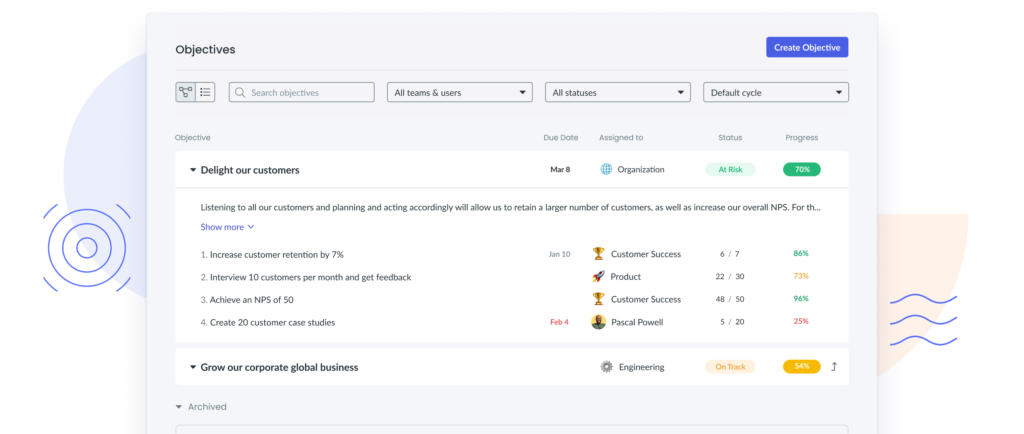
The benefits of a project scope
- Informs stakeholders of upcoming projects
- Plans an appropriate budget
- Aligns team members on project expectations
- Reduces the risk of the project going over time
- Determines what resources are needed to achieve the project
1Informs stakeholders of upcoming projects
Some stakeholders are senior executives who may not be involved in a project from the ground level. Unlike individual contributors, they may only be consulted on or informed of an upcoming project after the fact or during stakeholder meetings. For this reason, it’s important to circulate the project scope before the stakeholder meeting; this way, everyone is informed and aware of upcoming projects.
In addition, project scope documents will inform stakeholders on an individual contributor level. As a teammate, it can be frustrating to not know what’s in the pipeline. Alerting your teammates of projects promptly via project scope documents will ensure everyone on the team is well informed and on the same page.
2Plans an appropriate budget
One of the most important factors to consider when working on a project is the predetermined budget—aim to stay within it. A budget will account for all expenses while ensuring the project is able to be completed without going over budget. To remain within the budget, key stakeholders can reference the project scope to gain an in-depth understanding of all monetary constraints before the project kicks off.
3Aligns team members on project expectations
One of the most powerful characteristics amongst successful managers or leaders is having the ability to align team members while guiding them towards a common goal or North Star. It can sometimes be difficult to align a team and ensure everyone is working in tandem towards a common goal, but a comprehensive project scope helps to eliminate the risk of misalignment right out of the gate.
A project scope will act as a uniform document that any and all team members or stakeholders can reference to understand the project expectations before they start working on the project. Not only does this document create a sense of cohesion, but it also ensures that everyone starts out on the right foot.
4Reduces the risk of the project going over time
If you’re not adequately prepared to start a project, your project may end up running over time. Depending on your project, going over time may be detrimental to your business. Take a tech startup shipping a new product, for example. If the startup doesn’t take the time to define timelines within their project scope, it may ultimately not be able to ship the product on time, which may lead to financial implications or unhappy customers and investors. This delay may also lead to a cascade of effects that continue to hinder future timelines.
5Determines what resources are needed to achieve the project
Without a project scope, it can be difficult to determine which resources are needed to bring a project to fruition. A proper project scope will include a list of specific project goals, deliverables, tasks, key stakeholders, costs, deadlines, and a list of any and all resources that are needed to complete the project.
7 steps to create a successful project scope
- Define clear project goals and objectives
- Create a project timeline
- Draft a project charter
- Consider consumer expectations and demands
- Run a risk review meeting
- Present a project draft plan to stakeholders
- Use a management tool
1Define clear project goals and objectives
The project scope will be referenced by everyone involved in the project. As the project manager or stakeholder responsible for creating the project scope document, you’re responsible for ensuring you’ve clearly defined the project goals and objectives within the project scope. Without clearly defined goals and objectives, those working on the project may not be able to work on the project efficiently. To ensure all key stakeholders can work efficiently and in tandem, you’ll want to use this opportunity to align your team by providing clearly defined project goals and objectives.
2Create a project timeline
A project timeline acts as a visual reference point for your teammates so everyone can stay organized and on track when working on a project. A solid timeline outlines the steps necessary to complete different components of the project while simultaneously providing a brief overview for each specific task. If your project has many moving parts, a timeline will ensure tasks aren’t forgotten or completed late. A visual representation will ensure your teammates are able to visualize both long-term and short-term tasks so they can plan their time and work accordingly.
3Draft a project charter
A project charter is a short document that outlines the high-level details of a project and is sometimes used as an overview of the project scope. The project charter outlines your project from start to finish and includes details like goals and objectives, the project scope, stakeholders involved in the project, what elements of the project stakeholders are responsible for, and details on how the project will be carried out. You may also hear a project charter referred to as a project definition report or project statement.
4Consider consumer expectations and demands
Considering consumer expectations and demands is extremely important. Identify how your project will be perceived by consumers, then when creating a project scope document, keep your considerations in mind to ensure you’re working on the project in a way that provides favorable results for the consumer. When creating any project scope, it’s important to do so with the consumer in mind.
5Run a risk review meeting
A risk assessment process or a risk review meeting is a crucial part of any project. Prioritizing this meeting will ensure all key stakeholders are on the same page when it comes to measuring and mitigating risk. During this meeting, you can address your risk management strategy so all key stakeholders can collaborate and work towards mitigating any risks before they arise.
6Present a project draft plan to stakeholders
Being a project manager or being responsible for creating the project scope document doesn’t mean you have to do everything on your own. While you may be responsible for finalizing the document, it doesn’t mean you can’t get feedback or lean on your teammates or project stakeholders for their input. Presenting a project draft plan to stakeholders not only helps you gain varying perspectives, but it also helps your teammates feel more involved and included in the process.
7Use a management tool
If you haven’t already started using a management tool to create project scope documents, you’ll be blown away by the results when you do! Project management tools like Fellow make it possible for you to track goals and objectives while having collaborative project meetings that allow you and your teammates to stay up to date on progress.
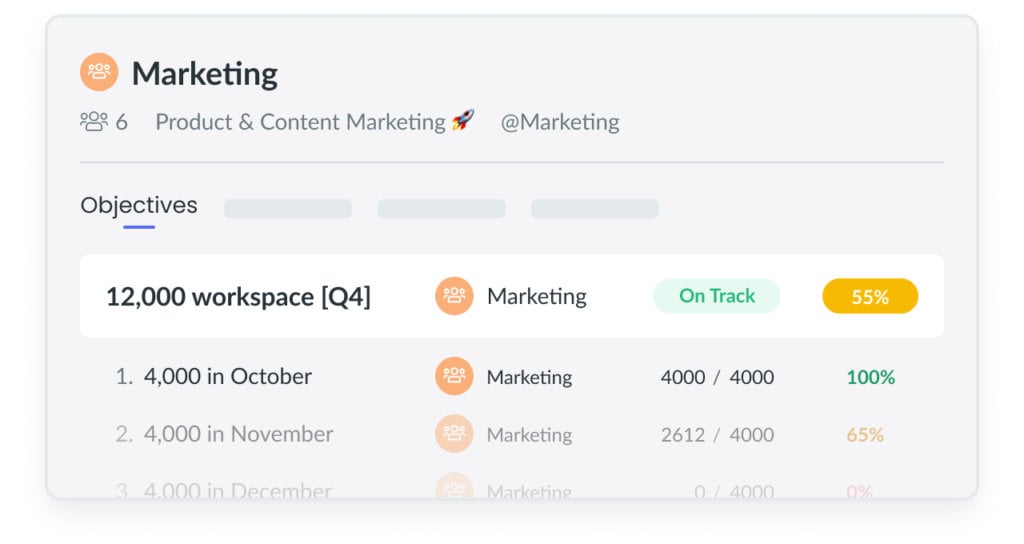
The below meeting template will help you facilitate daily stand-ups or check-ins with your project coordinator so you can formulate an in-depth understanding of their progress or any blockers that may get in the way of their success. Plus, this video is an excellent resource for learning more about how to use objectives in Fellow.
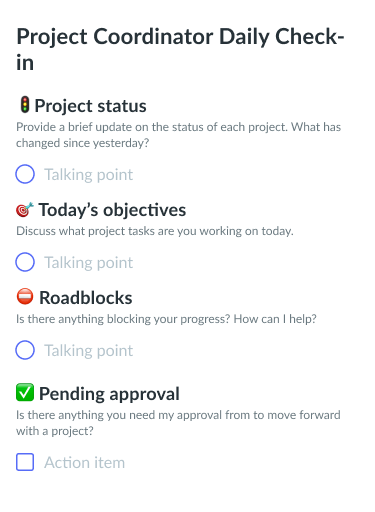
Create a project scope that helps meet deliverables
When creating a project scope, it’s important to be thorough and meticulous. You’ll want to make sure to incorporate all key elements while circulating the document to all key stakeholders. Following the steps in this article will ensure you have the skills and knowledge necessary to create a successful project scope.









